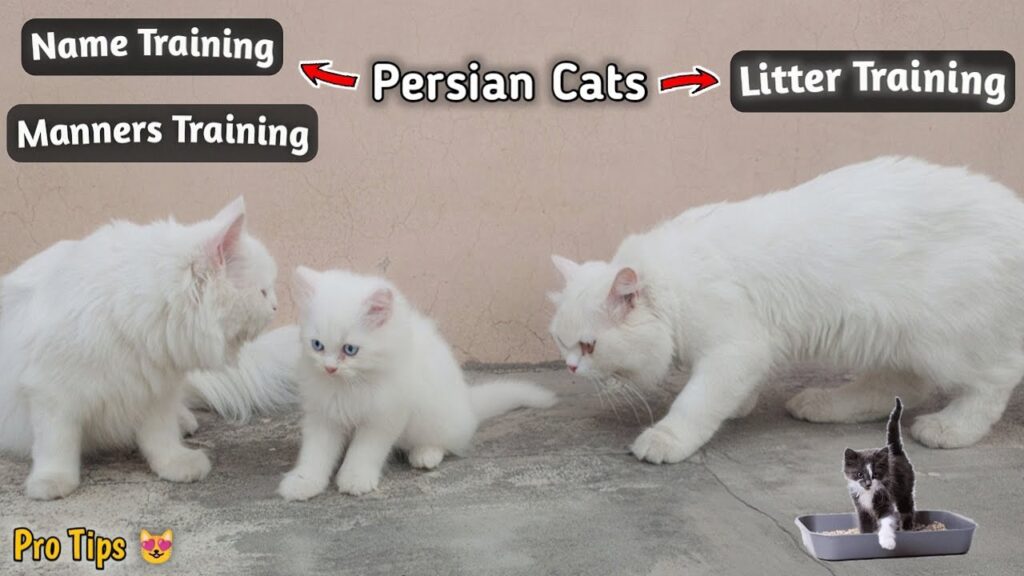Have you ever wondered how to improve your Persian cat’s behavior and overall well-being? Well, you’re in luck because today we’re going to discuss some content training techniques specifically tailored for Persian cats. Whether you’re a new cat owner or have had your furry friend for a while, these tips will surely come in handy.
Now, Persian cats have a distinct personality and lifestyle that require specific training techniques. They are known for their calm and gentle nature, but can also be quite independent. To ensure their happiness and keep them well-behaved, it’s important to provide them with the right training. In our upcoming article, we’ll delve into the details of how to effectively train your Persian cat to follow commands, use the litter box properly, and even how to tackle common behavior issues.
So, if you’re ready to learn more about content training techniques that will make your Persian cat happier and more responsive, stay tuned for our in-depth article. Whether you want to teach your cat tricks, prevent scratching furniture, or simply enhance your bond with your feline companion, we’ve got you covered. Keep an eye out for our upcoming article and let’s make your Persian cat’s life even more enjoyable together! Persian cats are known for their long, luxurious coats, playful personalities, and sweet dispositions. These beautiful felines are a popular choice for cat lovers around the world. While they may be independent by nature, Persian cats can still benefit from training. Whether you’re a new owner or have had Persian cats for years, training can help strengthen the bond between you and your feline companion. In this article, we will explore various training techniques for Persian cats that can help you effectively communicate with your pet and enhance their overall well-being.

Understanding the Persians
Before delving into training techniques, it’s important to understand the nature of Persian cats. These cats are known for their calm and relaxed demeanor. They often prefer a quiet and peaceful environment, making them a great choice for apartment living. Persian cats tend to be less active compared to other breeds, which makes them less inclined to engage in intense play or exercise. Understanding these characteristics will help you tailor your training techniques to best suit their needs.
Positive Reinforcement
When it comes to training Persian cats, positive reinforcement is key. This training technique involves rewarding your cat for desired behaviors rather than punishing or scolding them for unwanted actions. Positive reinforcement can include treats, praise, and gentle petting. This method not only motivates your cat to repeat the desired behavior but also strengthens the bond between you and your furry companion.

Patience is Key
Training a Persian cat requires patience and understanding. These felines can be sensitive and may take longer to learn new commands or behaviors. It’s crucial to remain patient throughout the training process and to never force your cat to perform a specific action. By being patient, you allow your Persian cat to learn at their own pace and build trust in the training process.
Establishing Trust
Building a strong foundation of trust is vital when training Persian cats. These cats thrive in environments where they feel safe and secure. Spend time bonding with your cat through daily grooming sessions, playtime, and gentle affection. By establishing trust and a positive relationship, your cat will be more responsive to training and more willing to learn new behaviors.

Target Training
Target training is a beneficial technique to introduce to your Persian cat’s training regimen. This involves using a target, such as a small stick or treat held in your hand, to guide your cat into desired positions or actions. For example, you can use the target to encourage your cat to jump onto a designated spot or use specific cat furniture. This technique helps your cat understand what you expect from them and provides them with a clear focus during training sessions.
Teaching Basic Commands
Teaching basic commands to your Persian cat can be a rewarding experience. Start with simple commands such as “sit” and “stay.” Use treats and positive reinforcement to encourage your cat to follow the command. Be patient and repeat the command consistently until your cat understands and performs the desired action. Remember to keep training sessions short, around 5-10 minutes, as Persian cats can have shorter attention spans.

House Training
House training is crucial when it comes to owning a Persian cat. Begin by designating a spot in your home for your cat’s litter box. Cats generally prefer privacy, so choose a low-traffic area. Show your cat where the litter box is located and place them in it, gently using their paws to dig in the litter. Reward your cat with praise or a treat every time they use the litter box correctly. Consistency is key, so be sure to clean the litter box regularly and place your cat in it after meals or naps.
Walking on a Leash
Surprisingly, Persian cats can be trained to walk on a leash. This training technique is ideal for owners who want to give their cats some outdoor stimulation while keeping them safe. Start by introducing your cat to a harness and leash indoors, allowing them to become comfortable with the gear. Once they are accustomed to wearing the harness, begin by taking short walks in a quiet and familiar environment. Reward your cat for walking calmly on the leash and gradually increase the duration and complexity of your walks.

Socialization
Persian cats can benefit from early socialization to ensure they are comfortable around people, animals, and new environments. Expose your cat to different situations, sounds, and people from a young age. Invite friends or family members over to interact with your cat, gradually introducing them to new faces and voices. Reward your cat with treats and praise for positive interactions. Early socialization can help prevent fear or anxiety-related behaviors in the long run.
Training for Grooming
Persian cats require regular grooming due to their thick and luxurious coats. Training your cat to tolerate grooming sessions will make the process more enjoyable for both of you. Start by introducing your cat to the grooming tools, such as brushes and combs, in a calm and relaxing environment. Reward your cat with treats and praise for remaining calm during grooming sessions. Gradually increase the duration of each session and be sure to provide positive reinforcement throughout. Make grooming a positive experience for your Persian cat to prevent them from developing a fear or aversion to it.
Building a Routine
Establishing a routine is beneficial for both you and your Persian cat. Cats thrive on predictability and structure, so create a schedule for feeding, playtime, training, and grooming. Stick to the routine as much as possible to provide your cat with a sense of security and stability. Consistency in routines can also aid in-house training and behavior modification.
Problem-Solving
During the training process, you may encounter challenges or unwanted behaviors. It’s important to address these issues using positive reinforcement and patience. For example, if your cat tends to scratch furniture, provide them with appropriate scratching posts and reward them when they use it. If your cat displays aggression, seek advice from a professional cat behaviorist or veterinarian to understand the underlying cause and implement appropriate training techniques.
Maintaining Consistency
Consistency is crucial when training Persian cats. Ensure that all family members are on the same page when it comes to training techniques and commands. Use consistent verbal cues and hand signals to communicate with your cat. Avoid confusing your cat by using different commands or signals for the same behavior. By maintaining consistency, you provide clarity and eliminate any potential confusion during training sessions.
Conclusion
Training Persian cats can be a fulfilling and enjoyable experience for both you and your furry friend. By understanding their unique characteristics, using positive reinforcement, and maintaining patience and consistency, you can effectively communicate with your Persian cat and strengthen your bond. Remember to tailor your training techniques to suit your cat’s individual needs and always celebrate their progress. With time, love, and dedication, your Persian cat will become a well-behaved and happy companion.